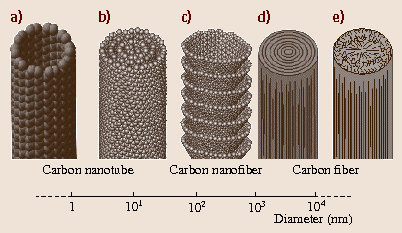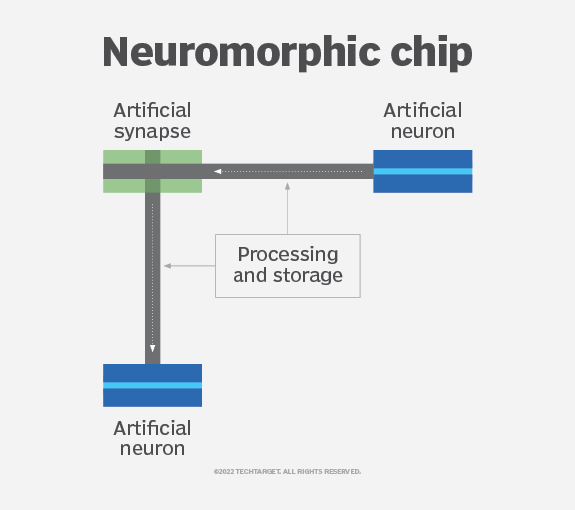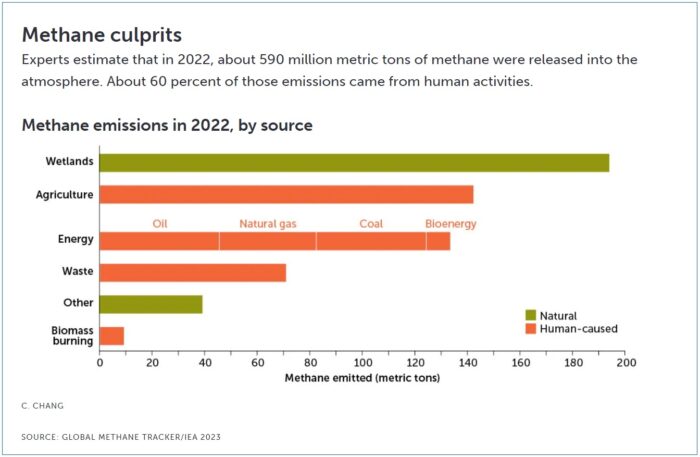Jan
18
2024
 One of the dreams of a green economy where the amount of CO2 in the atmosphere is stable, and not slowly increasing, is the ability to draw CO2 from the atmosphere and convert it to a solid form. Often referred to as carbon capture, some form of this is going to be necessary eventually, and most climate projections include the notion of carbon capture coming online by 2050. Right now we don’t have a way to economically and on a massive industrial scale pull significant CO2 from the air. There is some carbon capture in the US, for example, but it accounts for only 0.4% of CO2 emissions. It is used near locations of high CO2 production, like coal-fired plants.
One of the dreams of a green economy where the amount of CO2 in the atmosphere is stable, and not slowly increasing, is the ability to draw CO2 from the atmosphere and convert it to a solid form. Often referred to as carbon capture, some form of this is going to be necessary eventually, and most climate projections include the notion of carbon capture coming online by 2050. Right now we don’t have a way to economically and on a massive industrial scale pull significant CO2 from the air. There is some carbon capture in the US, for example, but it accounts for only 0.4% of CO2 emissions. It is used near locations of high CO2 production, like coal-fired plants.
But there is a lot of research being done, mostly in the proof of concept stage. Scientists at the DOE and Brookhaven National Laboratory have published a process which seems to have promise. They can convert CO2 in the atmosphere to carbon nanofibers, which is a solid form of carbon with potential industrial uses. One potential use of these nanofibers would be as filler for concrete. This would bind up the carbon for at least 50 years, while making the concrete stronger.
In order to get from CO2 to carbon nanofibers they break the process up into two steps. They figured out a way, using an iron-cobalt catalyst, to make carbon monoxide (CO) into carbon nanofibers. This is a thermocatalyst process operating at 400 degrees C. That’s hot, but practical for industrial processes. It’s also much lower than the 1000 degrees C required for a method that would go directly from CO2 to carbon nanofibers.
Continue Reading »
Jan
16
2024
 In 1964 Isaac Asimov, asked to imagine the world 50 years in the future, wrote:
In 1964 Isaac Asimov, asked to imagine the world 50 years in the future, wrote:
“The appliances of 2014 will have no electric cords, of course, for they will be powered by long- lived batteries running on radioisotopes. The isotopes will not be expensive for they will be by- products of the fission-power plants which, by 2014, will be supplying well over half the power needs of humanity.”
Today nuclear fission provides about 10% of the world’s electricity. Asimov can be forgiven for being off by such a large amount. He, as a science fiction futurist, was thinking more about the technology itself. Technology is easier to predict than things like public acceptance, irrational fear of anything nuclear, or even economics (which even economists have a hard time predicting).
But he was completely off about the notion that nuclear batteries would be running most everyday appliances and electronics. This now seems like a quaint retro-futuristic vision, something out of the Fallout franchise. Here the obstacle to widespread adoption of nuclear batteries has been primarily technological (issues of economics and public acceptance have not even come into play yet). Might Asimov’s vision still come true, just decades later than he thought? It’s theoretically possible, but there is still a major limitation that for now appears to be a deal-killer – the power output is still extremely low.
Continue Reading »
Jan
04
2024
 This is one of the biggest thought experiments in science today – as we look for life elsewhere in the universe, what should we be looking for, exactly? Other stellar systems are too far away to examine directly, and even our most powerful telescopes can only resolve points of light. So how do we tell if there is life on a distant exoplanet? Also, how could we detect a distant technological civilization?
This is one of the biggest thought experiments in science today – as we look for life elsewhere in the universe, what should we be looking for, exactly? Other stellar systems are too far away to examine directly, and even our most powerful telescopes can only resolve points of light. So how do we tell if there is life on a distant exoplanet? Also, how could we detect a distant technological civilization?
Here is where the thought experiment comes in. We know what life on Earth is like, and we know what human technology is like, so obviously we can search for other examples of what we already know. But the question is – how might life different from life on Earth be detected? What are the possible signatures of a planet covered in living things that perhaps look nothing like life on Earth. Similarly, what alien technologies might theoretically exist, and how could we detect them?
A recent paper explores this question from one particular angle – are there conditions on a planet that are necessary for the development of technology? They hypothesize that there is an “oxygen bottleneck”, a minimum concentration of oxygen in the atmosphere of a planet, that is necessary for the development of advanced technology. Specifically they argue that open air combustion, which requires a partial pressure (PO2) of oxygen of ≥ 18% (it’s about 21% on Earth), is necessary for fire and metallurgy, and that these are necessary stepping stones on the path to advanced technology.
Continue Reading »
Dec
18
2023
 Even high quality media outlets will get it wrong from time to time. I notice this tends to happen when there is a mature and sophisticated propaganda campaign that has had enough time and reach to essentially gaslight a major portion of the public, and further where a particular expertise is required to understand why the propaganda is false. This is true, for example, for acupuncture, where even medical experts don’t have sufficient topic expertise to know why the claims being made are largely pseudoscience.
Even high quality media outlets will get it wrong from time to time. I notice this tends to happen when there is a mature and sophisticated propaganda campaign that has had enough time and reach to essentially gaslight a major portion of the public, and further where a particular expertise is required to understand why the propaganda is false. This is true, for example, for acupuncture, where even medical experts don’t have sufficient topic expertise to know why the claims being made are largely pseudoscience.
Where there is arguably the biggest gap between the scientific evidence and public opinion is genetically modified organisms (GMOs). There has been a well-funded and unfortunately successful campaign to unfairly and unscientifically demonize GMO technology, largely funded by the organic lobby but also environmental groups. Scientific pushback has ameliorated this somewhat. Further, the more time that goes by without the predicted “GMO apocalypse” the less urgent the fearmongering seems. Plus, genetic engineering works and is safe and is producing results, and people may be just getting more comfortable with it over time.
But it seems to me that there are still some people who are stuck in the anti-GMO narrative, and they are making increasingly poor and unconvincing arguments to sustain their negative attitude. An example is a recent article in The Conversation – Genetically modified crops aren’t a solution to climate change, despite what the biotech industry says. The article is by Barbara Van Dyck, who is a long time anti-GMO activist, even participating in disruptions of field trials. Let’s dive into her recent article.
Continue Reading »
Dec
14
2023
 Australian researchers at the International Centre for Neuromorphic Systems (ICNS) at Western Sydney University have announced they are building what they are calling Deep South (based on IBM’s Deep Blue). This will be the world’s largest neuromorphic supercomputer, with 228 trillion synaptic operations per second. This won’t be the fastest supercomputer in the world, which is currently reaching the exascale with quintillions of operations per second. So then what’s the big deal? It probably has something to do with the “neuromorphic” part.
Australian researchers at the International Centre for Neuromorphic Systems (ICNS) at Western Sydney University have announced they are building what they are calling Deep South (based on IBM’s Deep Blue). This will be the world’s largest neuromorphic supercomputer, with 228 trillion synaptic operations per second. This won’t be the fastest supercomputer in the world, which is currently reaching the exascale with quintillions of operations per second. So then what’s the big deal? It probably has something to do with the “neuromorphic” part.
The basic definition of a neuromorphic computer is one based on or inspired by the design of biological systems – something more closely resembling neurons and synapses. Conventional computers have central processing units and separate memory storage. But they seem to get the job done. Neuromorphic computers have components that function more like neurons and synapses which are both memory and processing at the same time. Also, the process is massively parallel and distributed. But if this is not necessarily faster than conventional computers, why bother?
There are two reasons, but the first is efficiency. The human brain is a powerful computer, and yet it operates only 20 watts of power. That is incredibly more energy efficient than any computer, and researchers believe this is because of the architecture. Right now specific computer applications use the energy of small countries. Crypto uses 127 terawatt hours per year, more than Norway. Data centers use 340 TWh. A Chat GPT query uses 15 times the energy as a normal Google query, and again is already getting to small-country levels of energy use. The AI revolution, whatever else you may think about it, is energy hungry.
Continue Reading »
Dec
08
2023
 Remember the 1980 film, The Formula? Probably not, because it was a mediocre film that did not age well. The basic plot is that Nazi chemists during WWII developed a formula for synthetic gasoline. A detective investigating a murder gets embroiled in a conspiracy to cover up the existence of this formula, and he struggles to expose it to the world, but is ultimately foiled by the many layers of this conspiracy. At the heart of the conspiracy is the fossil fuel industry, who wants to protect their golden goose. I remember thinking at the time that this was dumb, and now I appreciate how dumb it is on a much deeper level.
Remember the 1980 film, The Formula? Probably not, because it was a mediocre film that did not age well. The basic plot is that Nazi chemists during WWII developed a formula for synthetic gasoline. A detective investigating a murder gets embroiled in a conspiracy to cover up the existence of this formula, and he struggles to expose it to the world, but is ultimately foiled by the many layers of this conspiracy. At the heart of the conspiracy is the fossil fuel industry, who wants to protect their golden goose. I remember thinking at the time that this was dumb, and now I appreciate how dumb it is on a much deeper level.
There is a scientific and critical thinking layer to the superficial thoughtlessness of this plot. From a critical thinking perspective, a conspiracy to suppress such a formula makes no sense. Such a formula (if we buy the premise of such a thing, which I don’t, as you will see) would be incredibly valuable to anyone who controls it. An oil company could (again, given the film’s premise) in a single stroke dominate the world’s energy production and crush the competition. But perhaps more critically, it makes no sense that such a formula would have been discovered almost 40 years prior to the timeframe of the film and yet was never reproduced. Have you every noticed that for any significant invention there are often a host of people claiming they really invented it. That’s because they likely did, or at least contributed to the invention. When our science and technology are at a point where a breakthrough is possible, it is likely that many people/labs/companies/nations will converge on the discovery at roughly the same time.
However, popular culture is stuck in the “lone genius” narrative, thinking of scientific breakthroughs as the unique product of a singular genius. This is just not how science typically works. Increasingly, it is a tangled web of collaboration with many players each contributing incrementally to an overall progress. Major inventions are “ripe”, and they have a paper trail. The notion that Nazi chemists were decades ahead of the rest of the world in such an immense technology is not plausible.
But even more fatal to the plot of this film is the premise of the title – that the limiting factor in the ability to fuel the world with synthetic gasoline is knowing the proper formula. Having a chemical formula for synthesizing hydrocarbons is not the tricky part. Whenever dealing with any energy technology, I find it extremely useful to ask the basic question – where is the energy coming from? If you don’t have a very thorough answer to this question, be skeptical.
Continue Reading »
Dec
04
2023
 One of my favorite recent video games is Subnautica, in which you have to survive almost entirely under a vast alien ocean. You have the advantage of advanced technology, but even then you are under constant threat of running out of oxygen, or having your habitat implode because it was not sufficiently reinforced. You are mostly working in brief increments and shallow depths.
One of my favorite recent video games is Subnautica, in which you have to survive almost entirely under a vast alien ocean. You have the advantage of advanced technology, but even then you are under constant threat of running out of oxygen, or having your habitat implode because it was not sufficiently reinforced. You are mostly working in brief increments and shallow depths.
That is similar to reality. Underwater is an extremely challenging environment, and human researchers do most of their work in brief increments and shallow depths. It says something that we have a continuous human presence in space, but not underwater. Some of the challenges are similar. You need a protected environment that is largely self-sufficient, at least for long periods of time. You need to provide heat and oxygen, and deal with changes in pressure. Of course, in space the problem is the lack of pressure outside the space station, while under water the challenge is increased pressure. This is actually far more of a challenge underwater, as the deeper you go the pressure difference from inside to out can be far greater than in space. Underwater you also have to deal with the corrosive effects of salt water.
A company, Deep, plans to have long term continuous human habitation under the ocean for the first time, with their Sentinel habitat. This will allow up to six people to live at 200 meters under the ocean for up to 28 days at a time. They plan on deploying the crew in November 2026. The Sentinel will be 400 cubic meters in size, with modules 6.2 meters in diameter – that is about the same diameter as a 777 fuselage. Imagine living in a space the size of a large jet for 28 days. By all accounts the space will be nice, but that is still cramped an isolating.
Continue Reading »
Nov
30
2023
 Methane is the forgotten greenhouse gas (sort of). Often, when discussing how best to reduce anthropogenic climate change, we talk about decarbonizing our electrical and transport sectors, and carbon removal. But methane is also a greenhouse gas, contributing to global warming, and we cannot afford to ignore it. As I discussed recently, methane traps more heat than CO2 but survives for a shorter amount of time in the atmosphere (about 12 years vs hundreds for CO2). Over 20 years it is 80 times worse than CO2, over 100 years it is 28 times worse.
Methane is the forgotten greenhouse gas (sort of). Often, when discussing how best to reduce anthropogenic climate change, we talk about decarbonizing our electrical and transport sectors, and carbon removal. But methane is also a greenhouse gas, contributing to global warming, and we cannot afford to ignore it. As I discussed recently, methane traps more heat than CO2 but survives for a shorter amount of time in the atmosphere (about 12 years vs hundreds for CO2). Over 20 years it is 80 times worse than CO2, over 100 years it is 28 times worse.
The world releases 580 million tons of methane each year, compared to 37 billion tons for CO2 (about two orders of magnitude more). That means over a 20 year timespan, methane has the equivalent greenhouse gas effect as 46 billion tons of CO2 (570 million x 80). In the short term methane is driving global warming a little more than CO2. Perhaps this is an opportunity. CO2 release is essentially the unavoidable consequence of burning fossil fuel. We can mitigate it with carbon capture, but this so far is minimally effective. I only real option is to reduce and then stop the burning of fossil fuel. We are in a race to do this, but it will take decades because the world is dependent on fossil fuel as an energy source.
Methane leaking into the atmosphere, however, is not a completely unavoidable consequence of industry. The largest source of methane emissions is natural, from wetlands (195 million tons). Next is agriculture (142 million) followed closely by the energy sector (135 million). Waste is another 73 million tons, followed by another 45 million from everything else (mostly natural). How can we mitigate this?
Continue Reading »
Nov
28
2023
 In my second book (shameless plug alert) – The Skeptics’ Guide to the Future – my coauthors and I try to imagine both the utopian and dystopian versions of the future, brought about by technology, either individually or collectively. This topic has come up multiple times recently on this blog when discussing technology and trust in science and scientists, so I thought it deserved its own discussion.
In my second book (shameless plug alert) – The Skeptics’ Guide to the Future – my coauthors and I try to imagine both the utopian and dystopian versions of the future, brought about by technology, either individually or collectively. This topic has come up multiple times recently on this blog when discussing technology and trust in science and scientists, so I thought it deserved its own discussion.
The overarching point is that science and technology should not be thought of as pure objective good, but rather they are tools, and tools can be used for good or evil. I admit I am a science enthusiast and a technophile, also a bit of an optimist, so when I hear about a new discovery or technology my first thoughts go to all the ways that it might make life better, or at least cooler. I have to remember to consider all the ways in which the technology can also be abused or exploited, which is why we explicitly did this in our futurism book.
So far, on the balance I think science and technology has been an incredible plus to humanity. For most of human existence life was “short, nasty, and brutish.” Science has given us a greater perspective on ourselves and the universe, freeing us from ignorance and superstition. And technology has given us the power to extend our lives, improve our health, and control our environment. It enables us to peer deep into the universe, and see for the first time a microscopic world that was always there but we had no idea existed. It enables us to travel beyond the confines of our planet, and eventually (if we survive) will enable us to be a multi-world, and even multi-system, species.
I do think we have lost touch with how bad life was prior to modern technology. Our period movies, for example, are highly romanticized. A brutally accurate portrayal of life prior to the industrial revolution would show people with horrible dentition ravaged by diseases and living mostly in drudgery. Most people never saw the world beyond their small village. We get a hint of this sometimes, but never the reality.
Continue Reading »
Nov
27
2023
 There are several technologies which seem likely to be transformative in the coming decades. Genetic bioengineering gives us the ability to control the basic machinery of life, including ourselves. Artificial intelligence is a suite of active, learning, information tools. Robotics continues its steady advance, and is increasingly reaching into the micro-scale. The world is becoming more and more digital, based upon information, and our ability to translate that information into physical reality is also increasing.
There are several technologies which seem likely to be transformative in the coming decades. Genetic bioengineering gives us the ability to control the basic machinery of life, including ourselves. Artificial intelligence is a suite of active, learning, information tools. Robotics continues its steady advance, and is increasingly reaching into the micro-scale. The world is becoming more and more digital, based upon information, and our ability to translate that information into physical reality is also increasing.
Finally, we are increasingly able to interface ourselves with this digital technology, through brain machine interfaces, and hybrid biological technology. This is the piece I want to discuss today, because of a recent paper detailing a hybrid biopolymer transistor. This is one of the goals of computer technology going forward – to make biological, or at least biocompatible, computers. The more biocompatible our digital technology, the better we will be able to interface that technology with biology, especially the human brain.
This begins with the transistor, the centerpiece of modern computing technology. A transistor is basically a switch that has two states, which can be used to store binary information (1s and 0s). If the switch in on, current flows through the semiconductor, and that indicates a 1, if it is off, current does not flow, indicating a zero. The switch is also controlled by a gate separated by an insulator. These switches can turn on and off 100 billion times a second. Circuits of these switches are designed to process information – to do the operations that form the basis of computing. (This is an oversimplification, but this is the basic idea.)\
This new hybrid transistor uses silk proteins as the insulator around the gates of the transistor. The innovation is the ability to control these proteins at the nano-scale necessary to make a modern transistor. Using silk proteins rather than an inorganic substance allows the transistor to react to its environment in a way that purely inorganic transistors cannot. For example, the ambient moisture will affect the insulating properties of these proteins, changing the operation of the gates.
Continue Reading »
 One of the dreams of a green economy where the amount of CO2 in the atmosphere is stable, and not slowly increasing, is the ability to draw CO2 from the atmosphere and convert it to a solid form. Often referred to as carbon capture, some form of this is going to be necessary eventually, and most climate projections include the notion of carbon capture coming online by 2050. Right now we don’t have a way to economically and on a massive industrial scale pull significant CO2 from the air. There is some carbon capture in the US, for example, but it accounts for only 0.4% of CO2 emissions. It is used near locations of high CO2 production, like coal-fired plants.
One of the dreams of a green economy where the amount of CO2 in the atmosphere is stable, and not slowly increasing, is the ability to draw CO2 from the atmosphere and convert it to a solid form. Often referred to as carbon capture, some form of this is going to be necessary eventually, and most climate projections include the notion of carbon capture coming online by 2050. Right now we don’t have a way to economically and on a massive industrial scale pull significant CO2 from the air. There is some carbon capture in the US, for example, but it accounts for only 0.4% of CO2 emissions. It is used near locations of high CO2 production, like coal-fired plants.
 In 1964 Isaac Asimov, asked to
In 1964 Isaac Asimov, asked to  This is one of the biggest thought experiments in science today – as we look for life elsewhere in the universe, what should we be looking for, exactly? Other stellar systems are too far away to examine directly, and even our most powerful telescopes can only resolve points of light. So how do we tell if there is life on a distant exoplanet? Also, how could we detect a distant technological civilization?
This is one of the biggest thought experiments in science today – as we look for life elsewhere in the universe, what should we be looking for, exactly? Other stellar systems are too far away to examine directly, and even our most powerful telescopes can only resolve points of light. So how do we tell if there is life on a distant exoplanet? Also, how could we detect a distant technological civilization? Even high quality media outlets will get it wrong from time to time. I notice this tends to happen when there is a mature and sophisticated propaganda campaign that has had enough time and reach to essentially gaslight a major portion of the public, and further where a particular expertise is required to understand why the propaganda is false. This is true, for example,
Even high quality media outlets will get it wrong from time to time. I notice this tends to happen when there is a mature and sophisticated propaganda campaign that has had enough time and reach to essentially gaslight a major portion of the public, and further where a particular expertise is required to understand why the propaganda is false. This is true, for example,  Australian researchers at the International Centre for Neuromorphic Systems (ICNS) at Western Sydney University
Australian researchers at the International Centre for Neuromorphic Systems (ICNS) at Western Sydney University  Remember the 1980 film,
Remember the 1980 film,  One of my favorite recent video games is Subnautica, in which you have to survive almost entirely under a vast alien ocean. You have the advantage of advanced technology, but even then you are under constant threat of running out of oxygen, or having your habitat implode because it was not sufficiently reinforced. You are mostly working in brief increments and shallow depths.
One of my favorite recent video games is Subnautica, in which you have to survive almost entirely under a vast alien ocean. You have the advantage of advanced technology, but even then you are under constant threat of running out of oxygen, or having your habitat implode because it was not sufficiently reinforced. You are mostly working in brief increments and shallow depths. Methane is the forgotten greenhouse gas (sort of). Often, when discussing how best to reduce anthropogenic climate change, we talk about decarbonizing our electrical and transport sectors, and carbon removal. But methane is also a greenhouse gas, contributing to global warming, and we cannot afford to ignore it.
Methane is the forgotten greenhouse gas (sort of). Often, when discussing how best to reduce anthropogenic climate change, we talk about decarbonizing our electrical and transport sectors, and carbon removal. But methane is also a greenhouse gas, contributing to global warming, and we cannot afford to ignore it.  In my second book (shameless plug alert) –
In my second book (shameless plug alert) –  There are several technologies which seem likely to be transformative in the coming decades. Genetic bioengineering gives us the ability to control the basic machinery of life, including ourselves. Artificial intelligence is a suite of active, learning, information tools. Robotics continues its steady advance, and is increasingly reaching into the micro-scale. The world is becoming more and more digital, based upon information, and our ability to translate that information into physical reality is also increasing.
There are several technologies which seem likely to be transformative in the coming decades. Genetic bioengineering gives us the ability to control the basic machinery of life, including ourselves. Artificial intelligence is a suite of active, learning, information tools. Robotics continues its steady advance, and is increasingly reaching into the micro-scale. The world is becoming more and more digital, based upon information, and our ability to translate that information into physical reality is also increasing.




